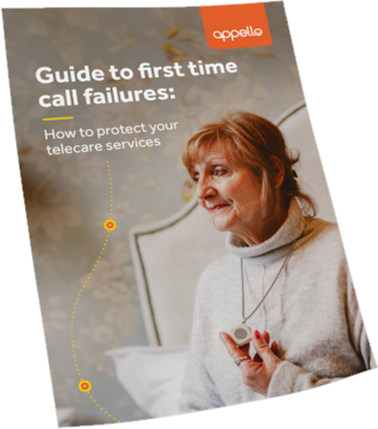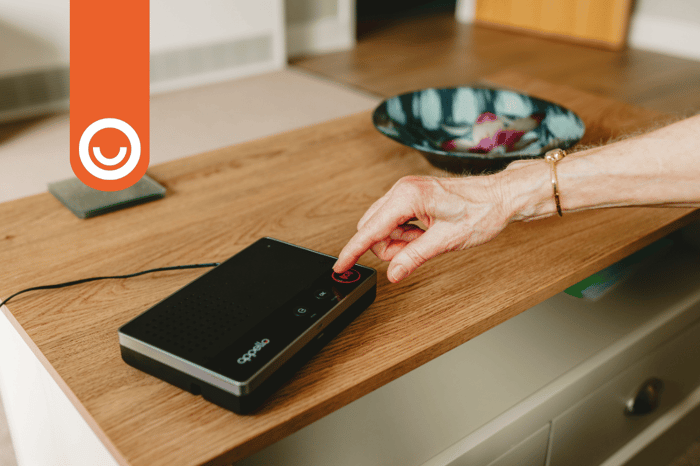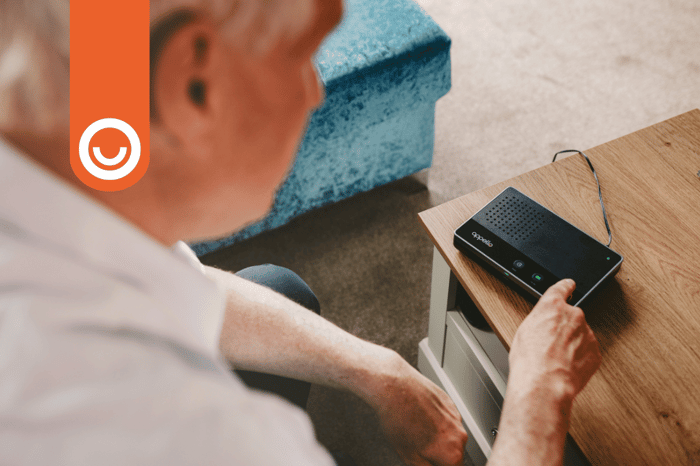Many telecare devices rely on the 2G and 3G networks to connect alarm calls to the monitoring centre. It’s therefore crucial to understand how your services will be affected when these networks are shut down.
The two immediate changes to be aware of are the closure of the 3G network (which is now almost complete) and Virgin Media O2’s (VMO2) announcement that they will be withdrawing international roaming on their 2G network from 1 October 2025.
This surprise move from VMO2 is particularly significant as many dispersed alarms use overseas mobile network operators for flexible roaming to access the UK's network.
In this blog post, we look at:
- Key dates for the 2G and 3G switch off
- How this impacts telecare services
- Why are 2G and 3G networks being phased out?
- What you should do to prepare for the changes
2G and 3G switch off - the key dates
3G network: This has now been switched off by Vodafone, EE and Three (completed during 2024), while Virgin Media O2 will switch off 3G in October 2025.
Standard 2G network: The UK's mobile network operators have agreed to switch off their 2G networks by 2033 at the latest, although this is expected to begin in 2028 (with the exception of Three, which has never had a 2G network).
VMO2 2G restriction: Access will be withdrawn to VMO2 2G inbound roaming services on 1 October 2025.
The four mobile network operators cover all mobile networks in the UK. Other providers (such as Giffgaff, Tesco Mobile and Sky Mobile) use the networks provided by these four mobile network operators, so they will follow the switch-off timings of the parent network.
How the 2G and 3G switch off impacts telecare
Telecare devices such as alarms, fall detectors and sensors use the mobile network to connect to the monitoring centre. This may be the main connectivity option or a back-up option.
How does the 3G network switch off affect telecare?
Devices that use 3G are likely to have 2G enabled, so you should confirm with your supplier that these will switch to use 2G automatically.
The 3G closure will potentially increase 2G network congestion, making this slower and less reliable. Any delays in emergency response due to connectivity issues could have serious consequences for the safety of telecare users. The TSA is seeking urgent reassurance that the 2G network will be able to deal with the additional volume.
Why the 2G network restriction is significant for telecare
VMO2 will withdraw international roaming access to its 2G network on 1 October 2025. This is significant because the majority of telecare devices use overseas mobile network operators for flexible roaming access to the UK’s network.
All 2G traffic will therefore be funnelled through the EE and Vodafone 2G networks, further increasing the pressure on these.
- There are an estimated 250,000 of the UK's 600,000 telecare devices still entirely reliant on 2G, while 2G is also often used a fallback connectivity option.
- TheTSA estimates losing VMO2 as an option will reduce the 2G network resilience by 33%.
- If there is an issue with either of the two remaining networks, this will reduce the resilience by at least 66%.
The TSA has been investigating potential red and amber flag cases to identify devices which will be significantly affected by the 2G restriction. They are working with manufacturers to mitigate the risks with urgent action.
For everyone else, it’s important to upgrade any devices relying on the 2G and 3G networks as soon as possible.
Why are 2G and 3G networks being phased out?
The 2G and 3G networks have been a critical part of telecom infrastructure over the last 30 years. But, as the demand for data increases in all areas of modern life, we need newer, more efficient technologies. This is in line with the government’s commitment in 2021 to improve the security and resilience of the UK's communications.
4G is now the industry standard for telecare, offering reliable and fast transmissions. While 5G is becoming more widespread for mobile phone users, it's not yet as robust as 4G for critical services such as telecare.
What should housing providers do next?
The priority is to ensure the continuity of your telecare services and protect the individuals who rely on these.
Ofcom has been clear that it’s the responsibility of all those involved in the delivery of telecare services to ensure these remain safe and effective in light of the 2G and 3G network shutdown. This means you need to take action now.
- Contact your supplier to confirm what networks your telecare devices use and if they are compatible with 4G.
- Ask what they plan to do if devices rely on 2G or 3G – are they testing and rolling out 4G products?
- Check whether their 4G products will incorporate VoLTE (which enables voice calls to be made over 4G for robust communication).
- Create a medium to long term plan to prepare for the standard 2G network switch off, which is expected to begin in 2028.
Appello held a webinar with the TSA to discuss the impact of the 2G/3G switch off on telecare, with a particular focus on VMO2’s decision to withdraw global inbound roaming to 2G.
Take a look at our blog post Preparing for the 2G & 3G Switch Off – Key Insights from Our TSA Webinar to find out what VMO2's 2G restriction means in practice, with details on the TSA's impact findings and the work they are doing to remove the reliance on the 2G network.
You deserve clarity, not confusion
That's why our goal at Appello is first and foremost to educate our customers – giving you the facts so you can make informed decisions with confidence. Talk to us about your digital telecare requirements today.
Watch our webinar on the 2G and 3G switch-off here.
You can find more details on the issue of first time call failures in our latest guide, which is available to download now

Talk to us to discuss your requirements and find out about our cost-effective and future proof digital solutions.


.png?width=700&name=Blog%20Thumbnails%20(5).png)
